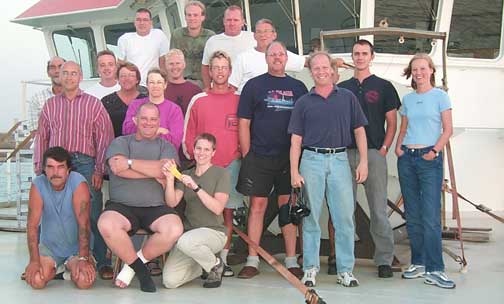 |
|
|
 |
|
|
Cruise Objectives
Cruise 178 of R/V Pelagia, the research vessel of the Netherlands Institute for Sea Research (NIOZ) sailed from Dar es Salaam, Tanzania to Port Said, Egypt between April 18 and May 8, 2001. This was the penultimate leg completing a circumnavigation of Africa in 2000-2001, represented by a series of separate research programs studying the physical, chemical, biologic, and geologic oceanography around the African continent.
The original aim of this cruise was to obtain cores, water samples and plankton tows, and set moorings off the Somali margin to study the modern and recent geologic history of monsoonal upwelling (SUPO- Somali Upwelling and Paleoceanography), but current political unrest and a threat of pirate activity precluded science activities off Somalia.
The focus of the cruise was shifted to the Gulf of Aden, where high deposition rate sediments record changes in surface wind and ocean temperature signatures of a variable Indian monsoon. The Gulf of Aden is a narrow, restricted basin which is subjected to seasonal reversals in the monsoon wind field parallel to the basin axis. Consequently, there are large changes in the surface SST, nutrient, and thermocline-depth fields associated with changes in the summer and winter monsoon winds.
At intermediate depths (500-1000m), the Gulf of Aden is ventilated by Red Sea Overflow Water (RSOW) which is characterized by high temperatures (~20°C) and salinities (~39 permil) and high d13C (~1.1-1.3 permil) values. A depth-transect of CTD stations and sediment cores was conducted along the south Aden Margin to reconstruct past variations in RSOW composition and level.
We also cored several sites which were proposed in an Ocean Drilling Program proposal submitted by deMenocal, Tamaki, Ganssen, et al. The aim of the ODP proposal is to drill several high accumulation rate sites which record late Neogene changes in the paleoclimate history of NE Africa and to use geochemical tephrostratigraphy to link these records to fossil records of African hominid evolution preserved Ethiopian and Kenyan sequences.
We are indebted to the Captain and crew of the R/V Pelagia who insured our safe passage through occasionally pirate-infested waters and who were always helpful and hard-working. They responded quickly and professionally to unexpected changes in the cruise plan and their tireless efforts ensured the collection of a legacy sample and data set from this data-poor region.
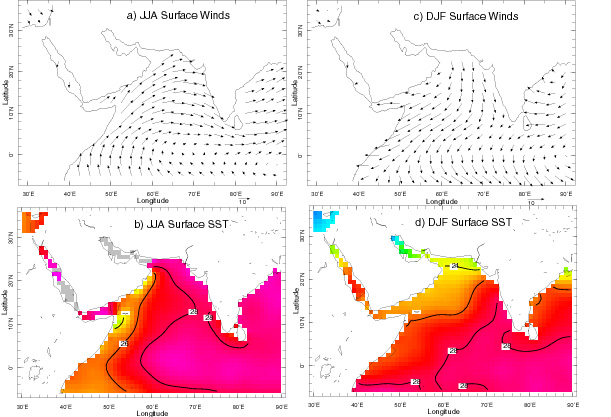 |
| Summer (JJA) and winter (DJF) surface winds and SST fields for the Gulf of Aden and NW Indian Ocean. Note the full seasonal reversal of the surface winds and the large SST seasonality in the Gulf of Aden which, unlike the Somali margin or Arabian Sea, does not experience summer monsoonal wind-driven upwelling. |
- Surface plankton pump and water samples were taken every 6 hours (below).
- A total of 11 box cores and 7 piston cores were recovered (below). Four cores were obtained from drillsites proposed in the ODP proposal. A depth transect of five box cores and three piston cores was conducted along the Aden margin from 1650-600m to monitor Holocene-Pleistocene variations in Red Sea Overflow Water.
- Fifteen shallow (0-150m) and deep (to 1000m or bottom) CTD and water sampling casts were conducted to monitor surface and deep water temperature, salinity, nutrient, and water /particulate chemistry gradients along the Gulf of Aden (below).
- Seven stations were sampled using the multinet sampler, which samples plankton at five discrete levels in the water column (below). Typically, two multinet casts, one shallow (0-150m) and one deep (0-800m), were deployed at each station.
- Two sediment trap/current meter moorings were deployed at Stations 4 and 6 (below).
- Atmospheric aerosol samples for mineral and organic studies were collected.
- Marine bird and cetacean populations and were observed and recorded.
Ship Track
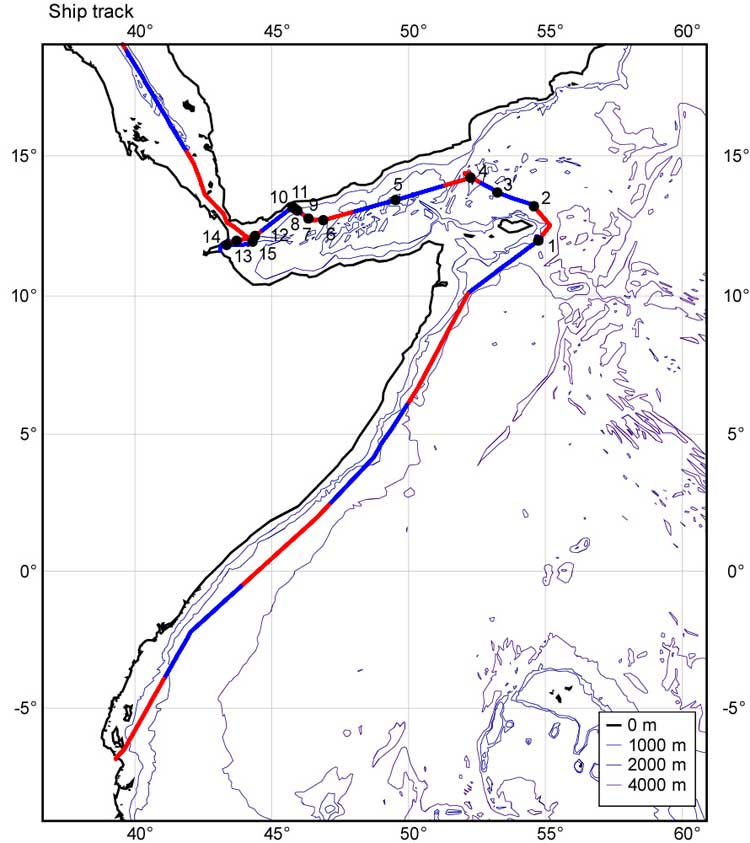 |
| Cruise track during Pelagia cruise178 from Dar es Salaam, Tanzania to Port Said, Egypt. The red and blue segments represent individual days. The final transit track up the Red Sea is not shown to show detail of the Gulf of Aden station locations which are numbered. |
Plankton Pump Sampling
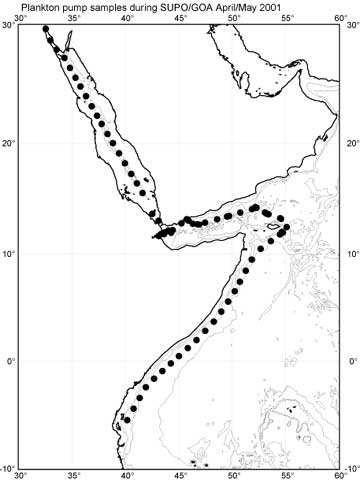 |
| Locations of plankton pump samples collected during Pelagia cruise 178. Plankton samples were archived and water sammples were taken for nutrients, alkenone compositions, and stable isotopic measurements of water and organics. |
Piston Cores And Box Cores
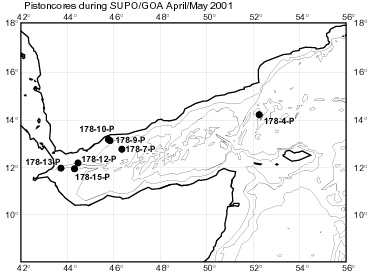 |
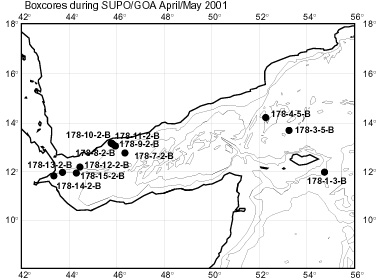 |
CTDs
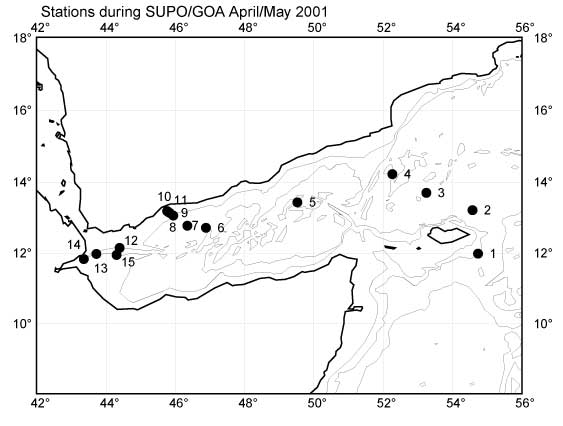 |
| CTD stations occupied during the Pelagia 178 cruise to the Gulf of Aden. Water samples were also taken for nutrients, organic, and stable isotope measurements of water and particulates. |
Multinet Sampling
 |
| Locations of multinet sampling stations in the Gulf of Aden. Depth-stratified plankton tows were taken at most sites at five levels between 0-150m, and five levels between 0-800m. |